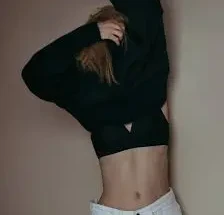Introduction: The Rise of the Braless Revolution

Have you ever sighed in relief after unhooking your bra at the end of a long day? You’re not alone. A growing number of women are choosing to forgo bras entirely, embracing a movement that prioritizes comfort, body autonomy, and self-expression. Dubbed the “Ditch the Bra” movement, this trend challenges societal norms and encourages individuals to listen to their bodies.
1. Historical Context: From Corsets to Liberation
The Evolution of Undergarments
Historically, women’s undergarments have been tools of both fashion and restriction. Corsets in the 16th century aimed to mold the female form, often at the expense of comfort and health. The early 20th century saw the introduction of bras, intended to offer support but also to conform to societal standards of modesty and femininity.
The 1960s Feminist Movement

The 1960s marked a pivotal era. Women began to challenge traditional roles, and the bra became a symbol of oppression for some. While the infamous “bra-burning” events are more myth than reality, the sentiment was clear: women sought freedom from restrictive norms, both physically and socially.
Unlocking AI Income Strategies: Your Guide to Earning in the Digital Age
2. Understanding the ‘Ditch the Bra’ Movement
Defining the Movement
The “Ditch the Bra” movement isn’t about discarding bras entirely but about making conscious choices. It’s about questioning why we wear bras, deciding whether they serve our personal comfort and needs, and choosing to forgo bras when it feels right.
Motivations Behind the Movement

- Comfort: Many find bras uncomfortable, especially underwires and tight bands.
- Health: Some believe that constant bra usage can impede lymphatic flow or cause skin issues.
- Body Positivity: Embracing one’s natural shape without alterations.
- Economic Factors: High-quality bras can be expensive; going braless can be cost-effective.
3. Benefits of Going Braless
Physical Comfort
Without the constraints of a bra, many experience reduced skin irritation, better circulation, and overall comfort.
Improved Posture and Muscle Tone
Some studies suggest that going braless can strengthen chest muscles, as they work to support the breasts naturally.
Enhanced Body Awareness

Being braless can increase one’s connection to their body, promoting self-awareness and acceptance.
4. Addressing Common Concerns
Sagging Myths
Contrary to popular belief, there’s limited evidence that bras prevent sagging. Factors like genetics, age, and weight fluctuations play more significant roles.
Social Perceptions
While societal norms have dictated bra usage, perceptions are shifting. More people are accepting of diverse choices regarding undergarments.
5. Fashion Tips for Going Braless
Choosing the Right Outfits

- Layering: Use jackets, scarves, or cardigans for added coverage.
- Patterns and Textures: Busy patterns can distract and provide discretion.
- Structured Fabrics: Thicker materials offer support and minimize visibility.
Alternatives to Traditional Bras
- Bralettes: Offer light support without underwires.
- Built-in Support Tops: Tank tops or dresses with built-in bras.
- Nipple Covers: Provide coverage without bulk.
6. Transitioning to a Braless Lifestyle
Start at Home
Begin by going braless in comfortable settings to build confidence.
Gradual Public Integration
Choose supportive outfits when venturing out, gradually adjusting to public settings.
7. Cultural and Societal Impacts
Media Representation
Celebrities and influencers embracing braless fashion have played a role in normalizing the trend.
Workplace Considerations
While some workplaces have dress codes, many are becoming more lenient, focusing on professionalism over specific attire.
The AIDS Epidemic: A Retrospective on the Crisis, Activism, and Medical Breakthroughs
8. Health Perspectives
Medical Opinions
Health professionals emphasize personal comfort. There’s no universal medical necessity for bras, and choices should be individualized.
Why Body Shaming is Still Prevalent: The Dark Side of Social Media
Breast Health
Regular self-examinations and body awareness are crucial, whether you wear one daily or choose to forgo bras entirely.
9. Economic and Environmental Considerations
Cost Savings
Reducing bra purchases can lead to significant savings over time.
Environmental Impact
Fewer purchases mean less waste, contributing to sustainable living.
10. Embracing Personal Choice
Ultimately, the decision to wear a bra or forgo bras should be personal. Whether for comfort, style, or health, understanding one’s reasons empowers informed choices.
FAQs
Q1: Will going braless cause my breasts to sag?
A: Sagging is influenced by factors like age, genetics, and weight changes. There’s limited evidence linking bralessness directly to sagging.
Q2: Is it socially acceptable to go braless in public?
A: Social norms are evolving. While acceptance varies by region and setting, many communities are becoming more open to personal choices.
Q3: What are some outfit tips for going braless?
A: Opt for layered outfits, structured fabrics, and consider alternatives like bralettes or nipple covers for added comfort.
Q4: Are there health benefits to not wearing a bra?
A: Some individuals experience improved comfort, reduced skin irritation, and better circulation when going braless.
Q5: How can I transition to a braless lifestyle?
A: Start by going braless at home, then gradually in public settings, choosing outfits that make you feel confident and comfortable.
Conclusion
Embracing the “Ditch the Bra” movement is about more than just comfort; it’s a statement of personal choice and empowerment. Whether you choose to wear a bra or not, the key is making a decision that aligns with your comfort and values.


